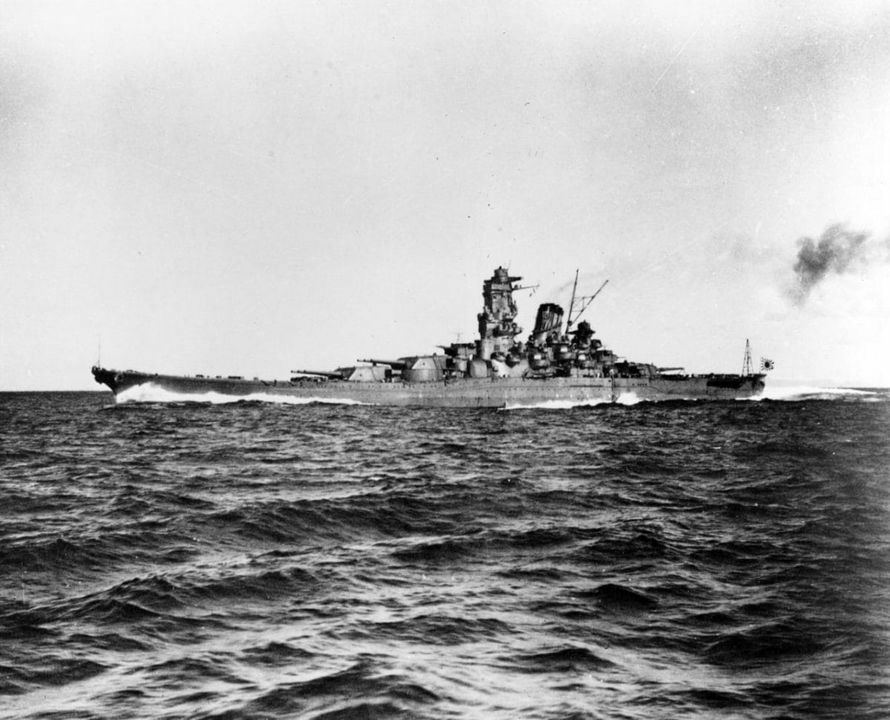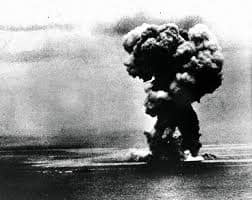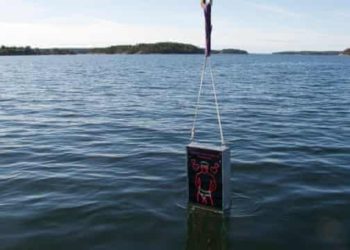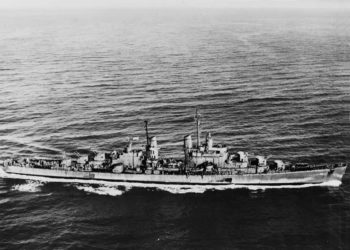The Death of the Yamato and the Last Gasp of the Imperial Japanese Navy
Japan’s Dire Situation in 1945

By 1945, it was painfully obvious that Japan was going to lose the war. With the Americans retaking the Philippines and their effective use of submarines, Japan was more or less cut off from 90% of whatever materials they needed to continue to fight. The situation was made even worse when a combined Allied fleet (the Royal Navy was now active in the Pacific in force) began to assault Okinawa.
It didn’t take an expert to realize why the Americans were doing this, as Okinawa was seen as a possible staging point for an invasion of the Home Island. This was something that could not be allowed to happen, and if the Americans were going to take Okinawa, then they were going to have to pay for it in blood.
But, as stated before, Japan was in no position to launch any kind of counter-offensive. Their fleet was decimated by 1945, and the few ships they had didn’t even have enough fuel to head to sea. There was also significant infighting between the Imperial Navy and the Imperial Army, which strained resources even more. In fact, it was this infighting that probably caused the Imperial Navy to come up with one last-ditch effort to halt the Allied advance.
Operation Ten-Go: A Desperate and Suicidal Mission

Code-named “Operation Ten-Go,” the plan was as bold as it was suicidal. The plan was to take a small task force, which included the super battleship IJN Yamato, and make a suicide run to Okinawa. The Yamato and her fleet would fight their way to Okinawa and run themselves aground near the shore, effectively turning them into shore batteries where they would engage the allied fleet until they ran out of ammunition or were destroyed. When that happened, the surviving crew would head to shore and fight alongside whatever remained of the Japanese defenders on the island.
As stated before, this was a suicide mission, and every single person who was part of this task force knew it. No one expected them to return, nor was it expected of them to return. With the Yamato as the flagship, the light cruiser Yahagi and eight destroyers would leave Tokuyama on April 6th on their final mission. Unfortunately, they would have little to no air cover, and not too long after they left Japan, the task force was detected by two American submarines lurking off the Japanese coast.
The American Response and the Final Confrontation

It didn’t take long for news of the task force to reach the Allies, and it was decided that this force needed to be eliminated.
390 aircraft, launched from 11 aircraft carriers, were dispatched to intercept the Yamato and her task force. Meanwhile, the Japanese had absolutely no air cover, and with most of their aircraft already committed to kamikaze attacks on Okinawa, there was no one to help. A fact known to all the Japanese sailors, as well as the force commander, Admiral Itō Seiichi.
At around noon on April 7th, the first American aircraft arrived over the Yamato and her task force. What took place next was nothing more than a slaughter. Despite a spirited defense by the inexperienced Japanese gunners, there were just too many aircraft, and eventually, the Yamato began to take hits. It’s uncertain just how many hits the Yamato took, but its fate was sealed.
The Final Moments and Aftermath
At 2:20 pm, Yamato capsized before it exploded. The resulting fireball reached up to three miles into the air and could be seen from the Japanese mainland. Out of an estimated crew of 3,300, only 280 men survived. The other ships in the task force were just as unfortunate, as the Yahagi was said to have been hit by at least 6 torpedoes and twelve bombs. She too would sink, taking 445 of her crew as well. The destroyer Asashimo was lost with all hands, and another destroyer, the Kasumi, was crippled and had to be scuttled.
By the end of it all, only four destroyers would return to Japan with the survivors. After this, the Japanese Imperial Navy would never challenge the Allied fleets again, remaining in port until Japan’s surrender just a few months later. ~NC










